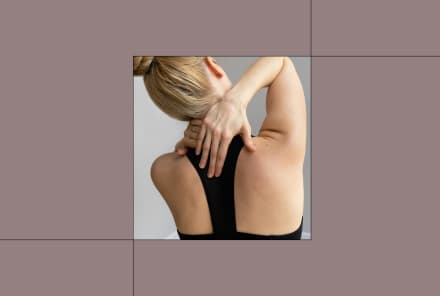Advertisement
What Should You Actually Be Doing On Rest Days? Fitness Experts Weigh In

There's no question that exercise is vital to our mental and physical well-being. But as fitness becomes less about the 6 a.m. treadmill workout and more about the evening restorative yoga session, it's become clear that taking days off from strenuous exercise—ideally one or two every week—is exceedingly important when it comes to longevity. In other words, if you want to play outside with your grandchildren in your 70s, show your joints some love now by taking a load off a few times a week.
But what should you actually be doing on rest days? Are they designated days to sit on the couch with a bowl of popcorn and a new Netflix series, or should you find a way to move, just less intensely?
Here's what the experts have to say.
Vegging out probably isn't the best idea.
Here's the deal: When we exercise in a strenuous way, our muscles break down, causing micro-tears. That sounds like a bad thing, but it really isn't—these micro-tears are exactly how our muscles get stronger. Still, they need to be given the proper care and support in order to bounce back each time injury-free.
When we move (rather than sitting still), it facilitates blood flow, which carries nutrients that assist in repair. "Active recovery means you're less likely to be as stiff or sore when returning to workouts, and you'll perform better as well because your body is primed," says professional athlete and sports and conditioning coach Andia Winslow. "This could be a slow meander in one's neighborhood, a casual bike ride, frolicking in a pool, a directed stretching session, or even a massage. And let's not neglect mental recovery in the form of meditation and breath work—the body and mind needs time to repair, too. It seems counterintuitive, but the real build and growth happens during rest."
Paul Landi, physical therapist and fitness manager at Professional Physical Therapy and Fitness Center, agrees that moving at a gentler pace—walking, swimming, or biking—is key when it comes to pumping out fluid buildups and stagnant circulation. "After rigorous activity the previous day or two, just moving at a 40-60% effort can help get everything moving again and help with tissue recovery and regeneration," he says.
Take a yin yoga class.
If walking or light cycling isn't you thing, opt for a yoga class that's less about the sweaty vinyasas and more about recovery, such as yin yoga.
"Yin yoga is amazing for off days," says Doctor Tiffany Lester of Parsley Health. "Not only does it activate the parasympathetic nervous system, which is responsible for digestion and relaxation, but it gives the body the chance to spend extended periods in poses that stretch tight muscles. I'm personally not great about stretching after workouts, and this forces me to extend every muscle in my body."
If you're looking for other restorative options, consider taking up the ancient movement practice qigong, or take a yoga nidra class.
Make use of specific recovery moves.
On those recovery days when you're pressed for time, Landi suggests practicing these two moves in your home. They only take a few minutes, and they'll help promote recovery.
1. Supine bridges.
Lie on your back with knees bent and feet on the floor. While maintaining a neutral pelvic position, gently lift your hips off the floor until hip joint is straight. The benefits of this pose include improved flexibility of hip flexors and quads, while creating controlled activation of glutes to help realign the pelvic position. Our sitting habits can really demand a need for this exercise in order to create relief in the lower back after hard activity. If you can, you can do these one leg at a time as long as you can maintain a neutral spine.
2. Bird-dog lifts.
While on hands and knees, create a neutral pelvic position. Maintaining a neutral pelvis, raise your opposite arm and leg off the floor to reach for opposing walls. Benefits of this pose include rotational stability around spinal column, as well as improving core strength, balance, and pelvic control. This is especially important on rest days. You want to continue to improve core strength and help your body learn and adapt to the stimulus you provided. Challenging stability, balance, and proprioception will help elicit an improved regeneration compared to just sitting around.
Intrigued? Read up on why active recovery is sweeping the fitness industry, and find out why slow fitness is what finally worked for this exercise fiend.
Watch Next
Enjoy some of our favorite clips from classes
Enjoy some of our favorite clips from classes
What Is Meditation?
Mindfulness/Spirituality | Light Watkins
Box Breathing
Mindfulness/Spirituality | Gwen Dittmar
What Breathwork Can Address
Mindfulness/Spirituality | Gwen Dittmar
The 8 Limbs of Yoga - What is Asana?
Yoga | Caley Alyssa
Two Standing Postures to Open Up Tight Hips
Yoga | Caley Alyssa
How Plants Can Optimize Athletic Performance
Nutrition | Rich Roll
What to Eat Before a Workout
Nutrition | Rich Roll
How Ayurveda Helps Us Navigate Modern Life
Nutrition | Sahara Rose
Messages About Love & Relationships
Love & Relationships | Esther Perel
Love Languages
Love & Relationships | Esther Perel











